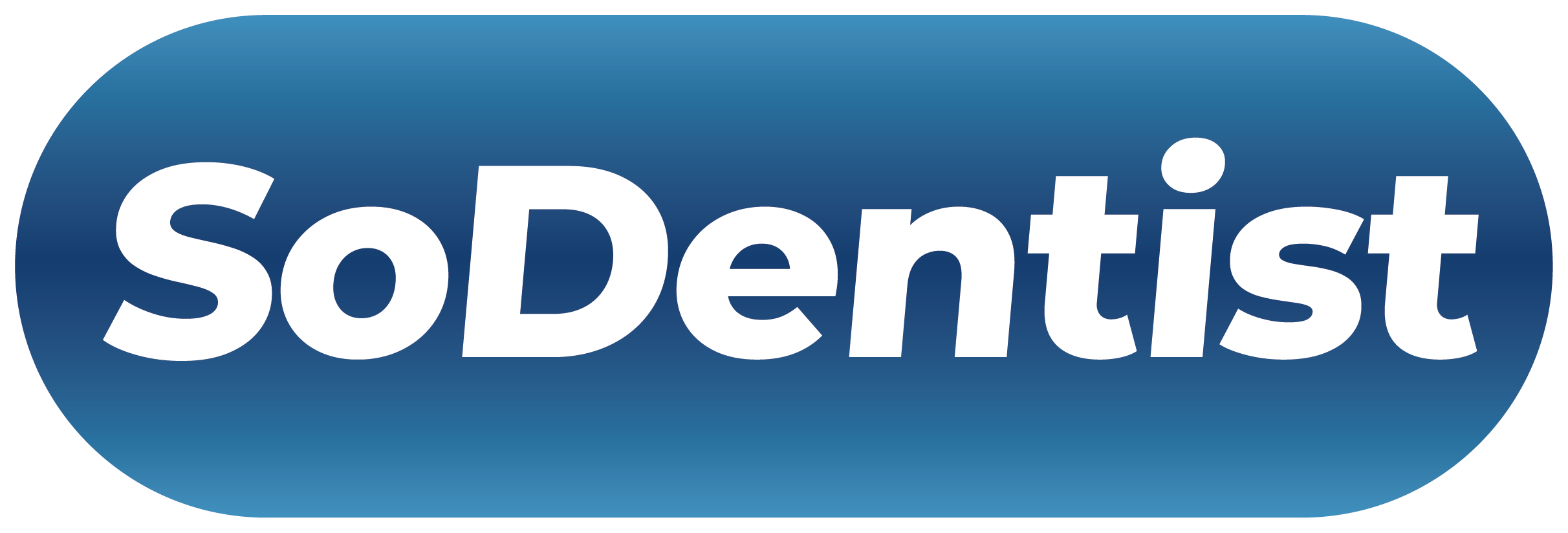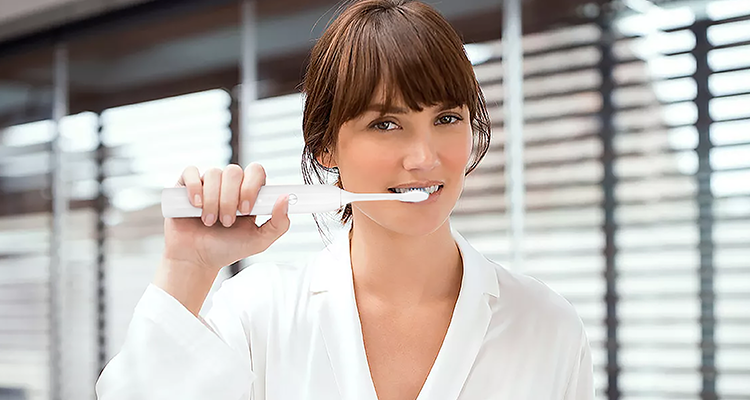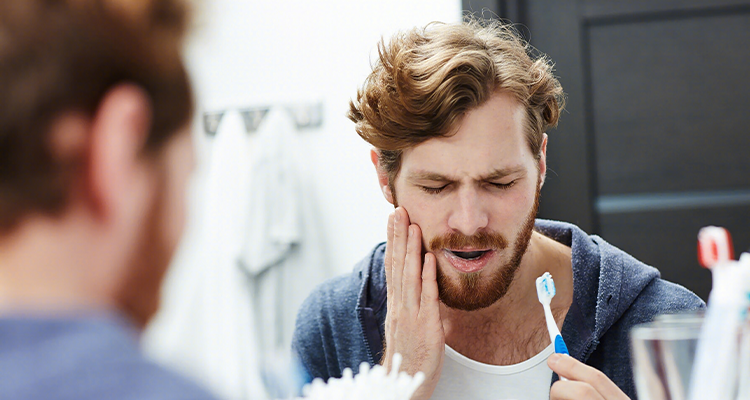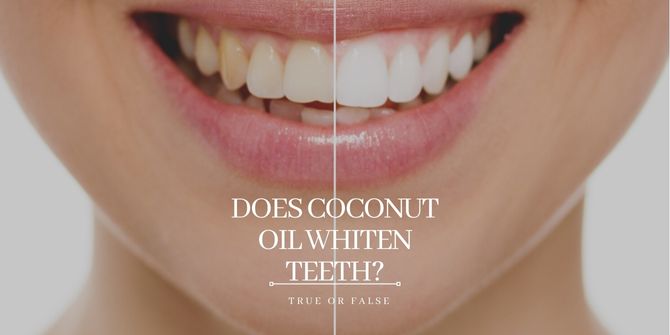In This Article
How to Clean a Toothbrush Effectively (Expert Advice)
May 05, 2023
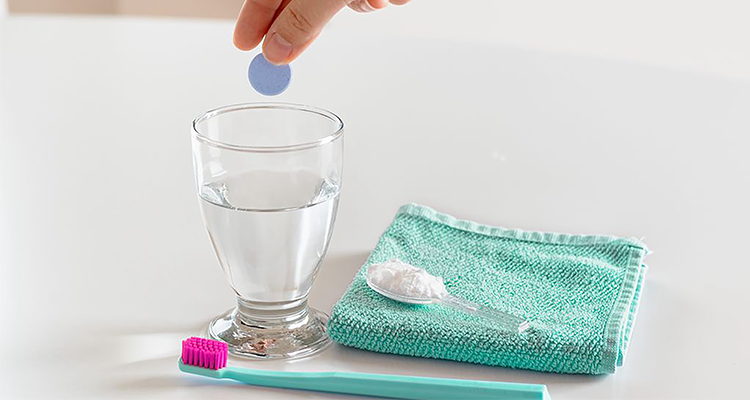
We all know the importance of brushing our teeth to maintain good oral hygiene, but have you ever wondered how dirty your toothbrush is after long-term use?
A study by the National Sanitation Foundation expresses that almost every toothbrush has at least 10 million bacteria!
With that in mind, knowing how to clean a toothbrush effectively is crucial to ensuring numerous harmful bacteria will not spread into your mouth.
This article will provide some tips and tricks for properly cleaning your toothbrush.
Why the Toothbrush Habor Bacteria?
Oral Bacteria. When you use your toothbrush to clean your teeth and gums, it naturally comes into contact with the bacteria in your mouth. These bacteria can stick to the bristles of your toothbrush.
Moist Environment. After brushing, if you don't properly rinse and store your toothbrush in an upright position, it can remain damp so that there is a favorable environment for bacteria to grow. Bacteria thrive in moist conditions.
Airborne Bacteria. Bacteria are present in the air all around us. When your toothbrush is exposed to the environment, it can pick up airborne bacteria, which can multiply on the toothbrush.
Cross-Contamination. If multiple toothbrushes are stored together close, they can transfer bacteria between them, especially if the bristles touch.
Toilet Plume. It's been reported that flushing the toilet can create a spray of tiny water droplets called a "toilet plume." If your toothbrush is stored near the toilet, it may be exposed to these droplets, which can contain fecal bacteria.
How to Clean a Toothbrush Effectively?
Regular brushing and using a water flosser are just the beginning of proper oral hygiene practices. It also involves proper care of your toothbrush, the tool you use to clean your teeth.
While we often focus on the importance of keeping our teeth and gums clean, we may overlook the importance of a clean toothbrush.
As mentioned above, if our toothbrush is not clean, it can harbor harmful bacteria that can damage our oral health.
Next, we'll discuss how to clean a toothbrush effectively, and then you can continue to maintain your oral health confidently.
Step 1: Gather your supplies
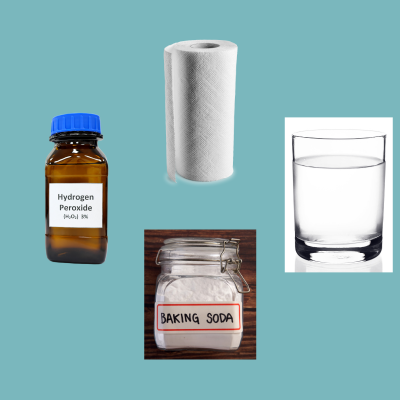
Before you start cleaning your toothbrush, gather the necessary supplies:
- Your toothbrush
- Warm tap water
- Antiseptic mouthwash or hydrogen peroxide
- A small cup or container
- A clean towel or paper towel
- Optional: Baking soda and a toothbrush holder
Step 2: Wash your hands

Always begin by washing your hands thoroughly with soap and warm water. Clean hands will help prevent transferring additional bacteria to your toothbrush during cleaning.
Step 3: Rinse the toothbrush
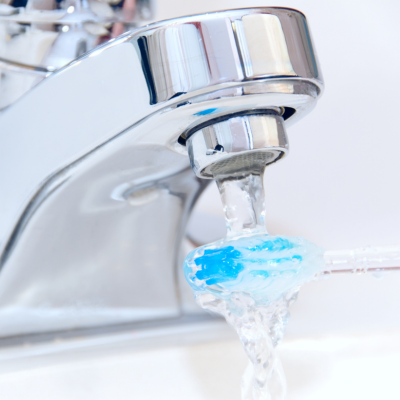
Rinsing your toothbrush before cleaning it will make the subsequent steps more effective. So you should do as follows:
- Hold your toothbrush under warm tap water to rinse any remaining toothpaste, debris, and saliva.
- Make sure all residue is gone by gently rubbing the bristles with your fingertips.
Step 4: Cleaning with an antiseptic rinse
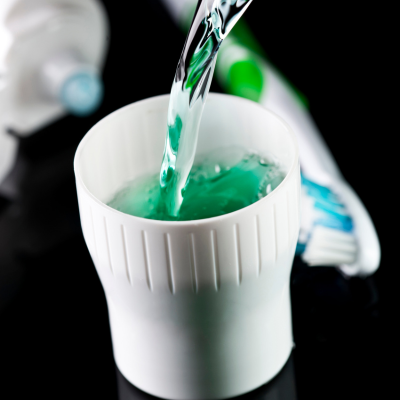
Disinfecting your toothbrush. Both of these alternatives are available for your consideration. Here are some instructions to help you:
- Pour a small amount (about 1/4 to 1/2 cup) of antiseptic mouthwash or hydrogen peroxide into a clean cup or container.
- Submerge the bristle end of your toothbrush in the mouthwash. Make sure the bristles are completely covered.
- Let your toothbrush soak in the mouthwash for about 15 minutes. The antimicrobial properties of them will help kill bacteria.
- After soaking, remove the toothbrush and rinse it thoroughly under warm tap water to remove any residual mouthwash or hydrogen peroxide.
Step 5: Optional baking soda scrub
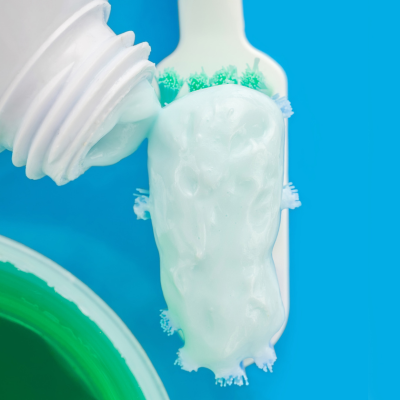
For an extra level of cleanliness, you can use baking soda to scrub your toothbrush gently:
- Lightly coat the toothbrush bristles with baking soda.
- Using your fingers, gently scrub the bristles, ensuring the baking soda reaches all areas.
- Rinse the toothbrush thoroughly under warm tap water to remove the baking soda residue.
Step 6: Dry the toothbrush
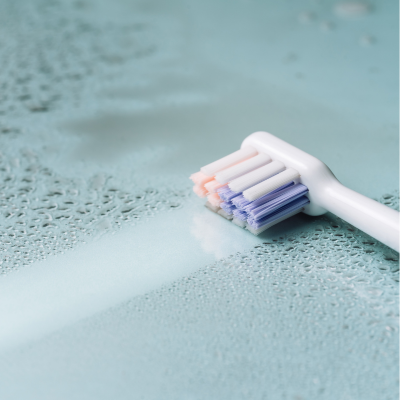
After cleaning and rinsing your toothbrush:
- Shake off any excess water.
- Dry it by letting it air dry or patting it with a clean towel or piece of paper towel.
- Ensure your toothbrush is completely dry before storing it to prevent bacterial growth.
Step 7: Store the toothbrush properly
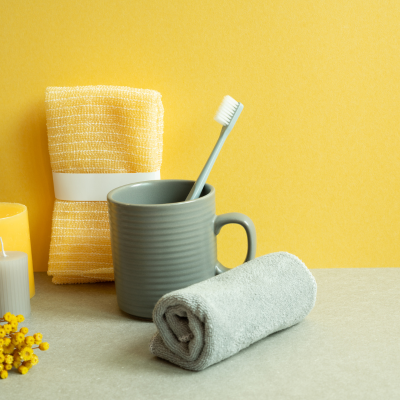
Proper storage is crucial to maintaining a clean toothbrush:
- Store your toothbrush in an upright position. This allows for better air circulation and faster drying.
- Keep your toothbrush away from other toothbrushes to prevent cross-contamination.
- Ensure it's stored in a clean, dry area, away from the toilet, to minimize exposure to toilet plumes.
Step 8: Replace your toothbrush regularly

Even with proper cleaning, toothbrushes wear out over time, and their bristles may become frayed. Replacing your toothbrush or head every 3-4 months or sooner is recommended if you notice signs of wear. A used toothbrush won't do as good a job cleaning your teeth.
Additional Tips:
- Avoid Sharing Toothbrushes. Sharing toothbrushes can lead to the exchange of bacteria and potentially harmful infections. Always use your toothbrush.
- Clean Your Toothbrush Holder. If you use a toothbrush holder or cup, clean it regularly to prevent bacteria buildup. Rinse it with warm water and let it air dry.
- Traveling with Your Toothbrush. Store your toothbrush in a clean, well-ventilated travel case to protect it from contamination.
- Consider UV Sanitizers. Some use ultraviolet light (UV) toothbrush sanitizers to eliminate germs and bacteria. While not necessary for everyone, they can be an additional layer of protection.
Teeth Cleaning Tools
After analyzing how to clean a toothbrush effectively, it's time to share the best way to keep up with your dental hygiene.
- Dental floss. Dental floss cleans particles or remands between teeth that a toothbrush can't reach. It helps remove plaque and food particles, preventing cavities and gum disease.
- Interdental brush. An interdental brush is a small brush with bristles that fit between teeth. It helps to clean hard-to-reach areas and removes plaque and debris.
- Tongue scraper. The tongue scraper is used to clean the tongue's surface. This tool helps to remove bacteria and debris that can cause bad breath.
- Water flosser. A water flosser, also known as an oral irrigator, is a useful tool. This device uses a stream of water that can clean between teeth and along the gumline. It is particularly useful for people with braces or other dental appliances.
Regular use of this apparatus, in addition to brushing and dental checkups, can aid in preventing cavities, gum disease, and other dental problems.
Summarize
In conclusion, understanding how to clean a toothbrush effectively is important to maintaining good oral hygiene. The bacteria and germs on a filthy toothbrush can lead to serious dental issues. By regularly cleaning your toothbrush, you can ensure that your teeth and gums stay healthy. Remember to replace your toothbrush every three to four months or as soon as the bristles begin to fray. With these simple tips, you can keep your toothbrush clean and your mouth healthy.
Share this article
